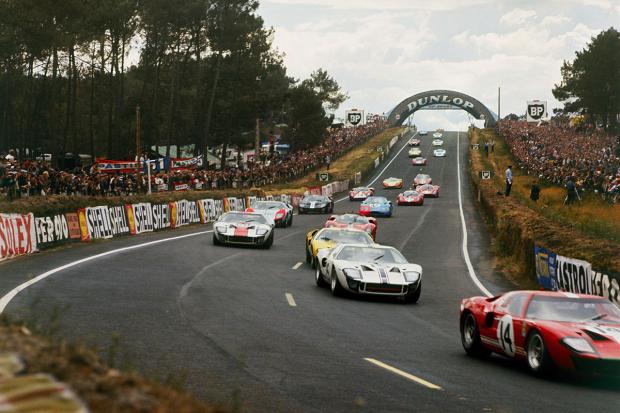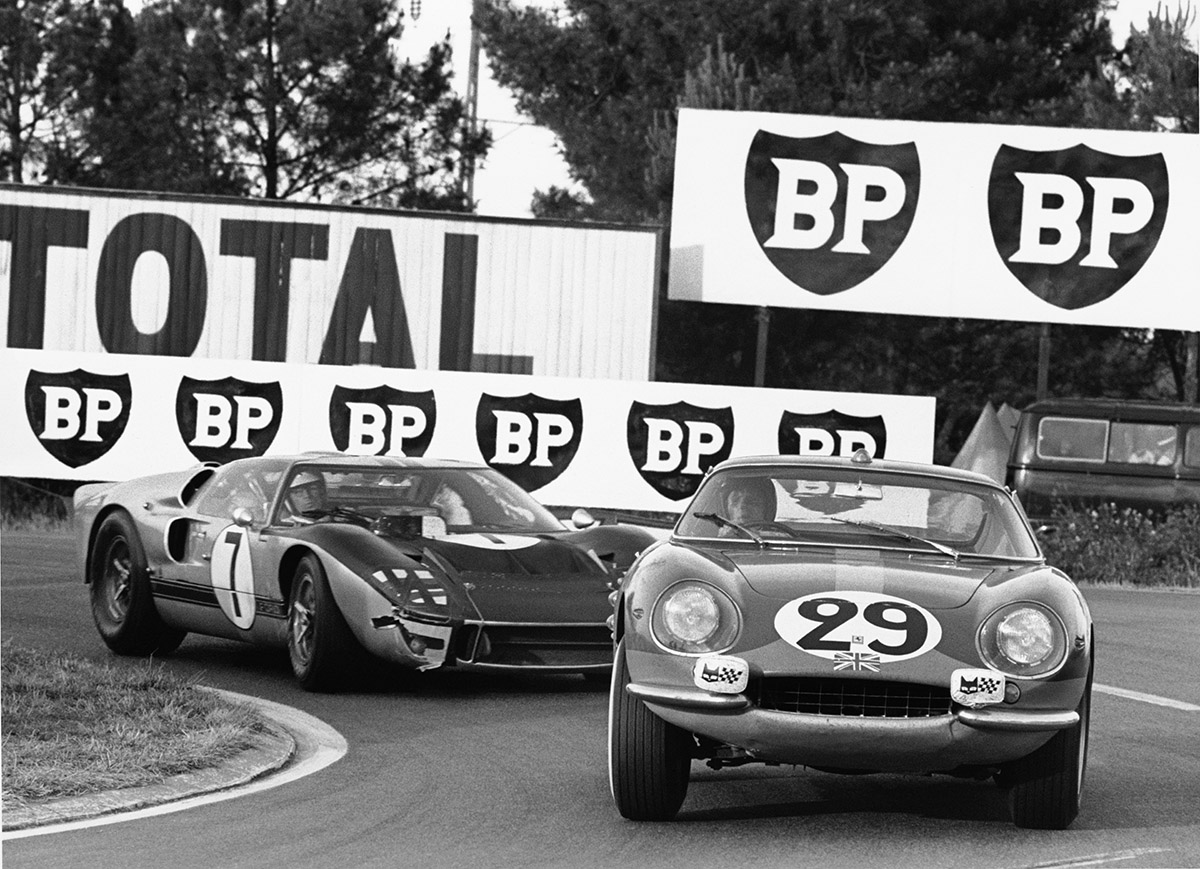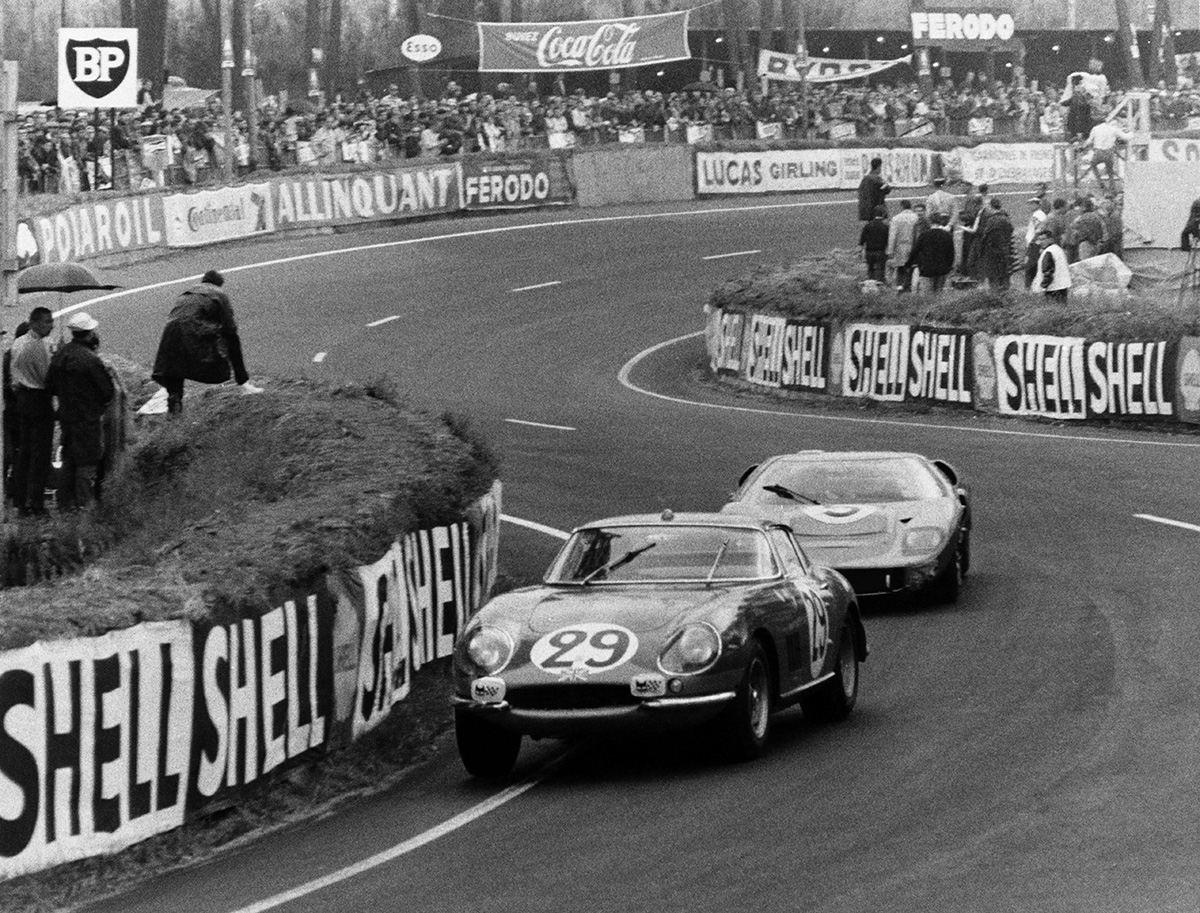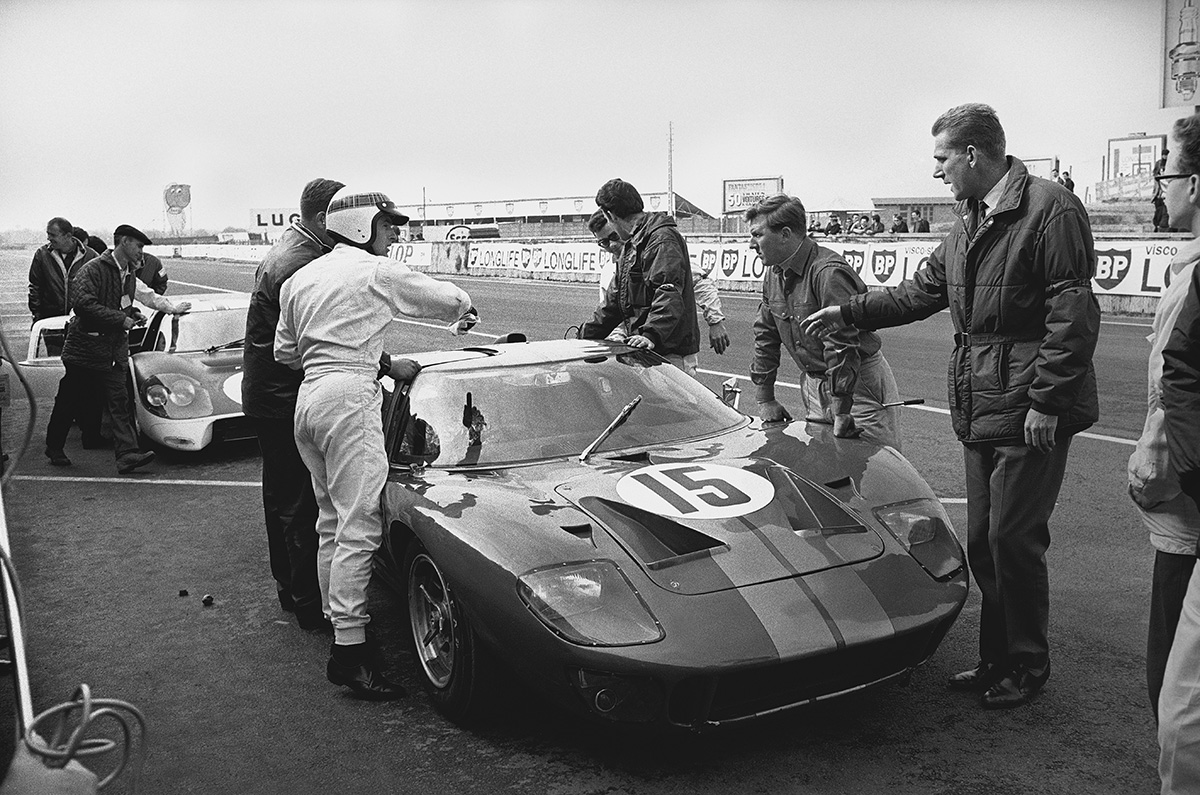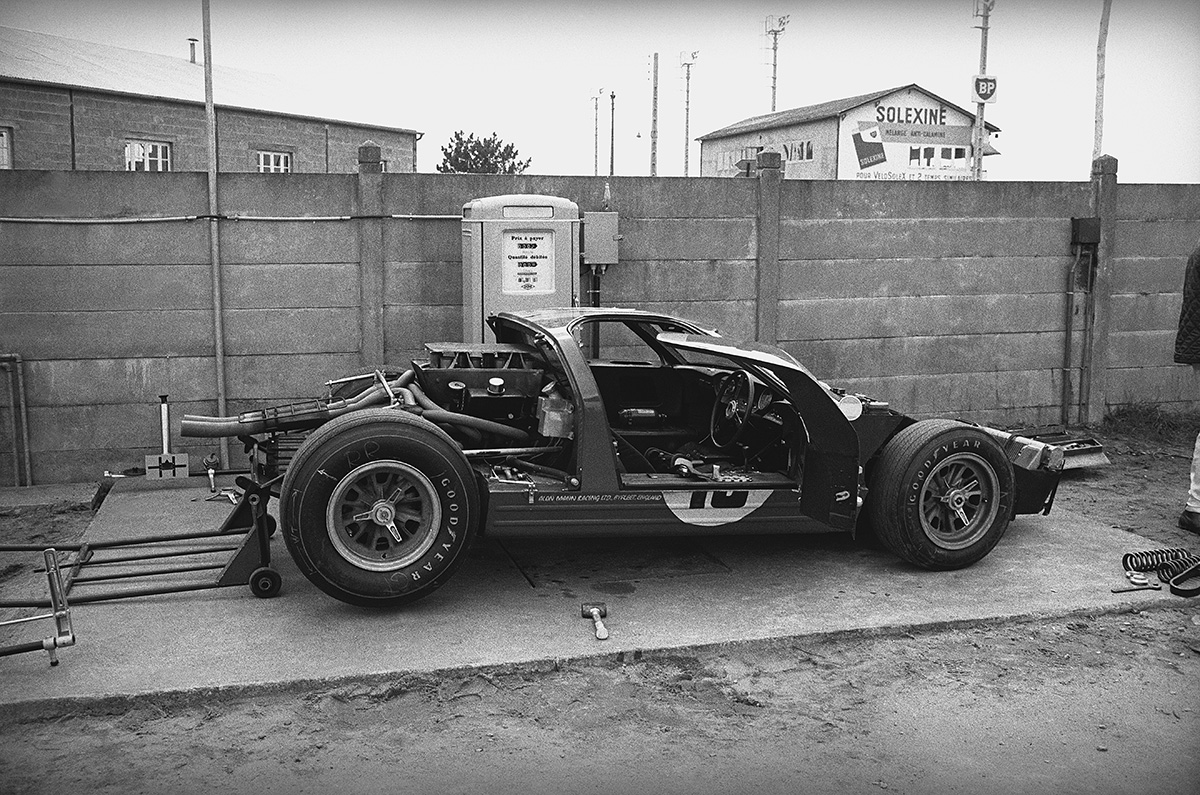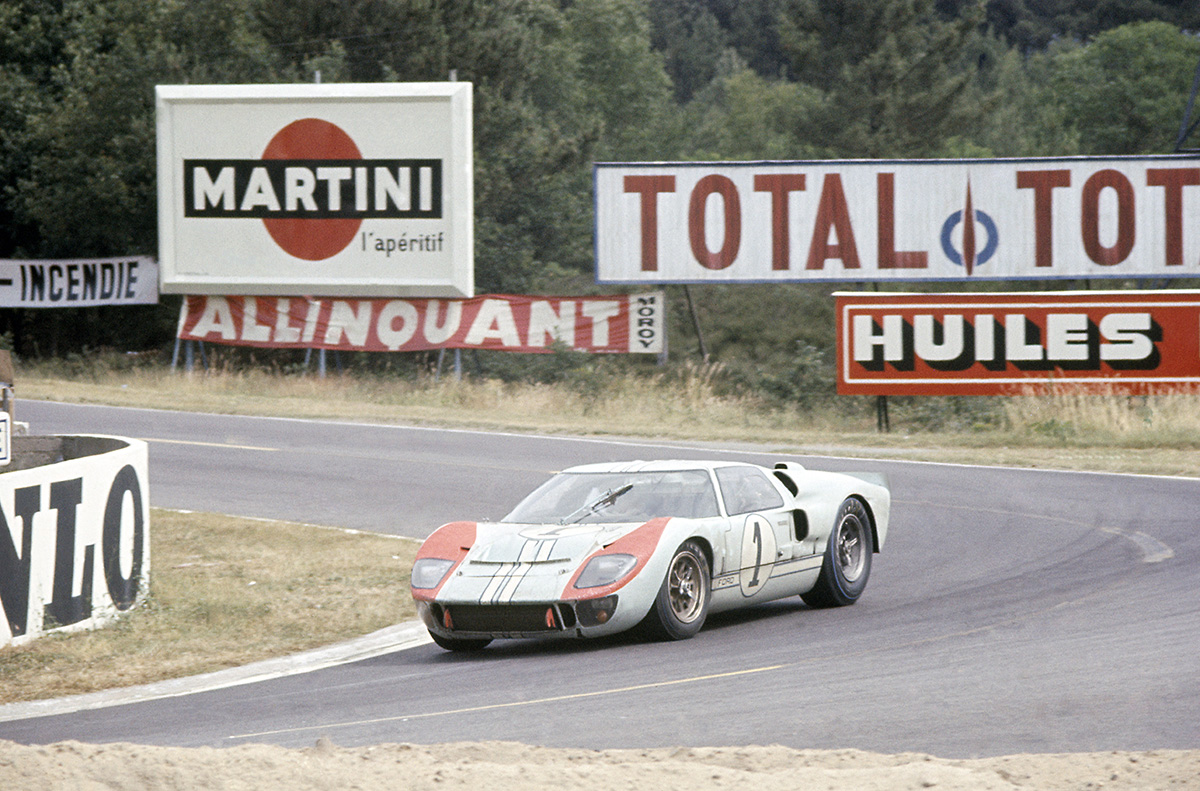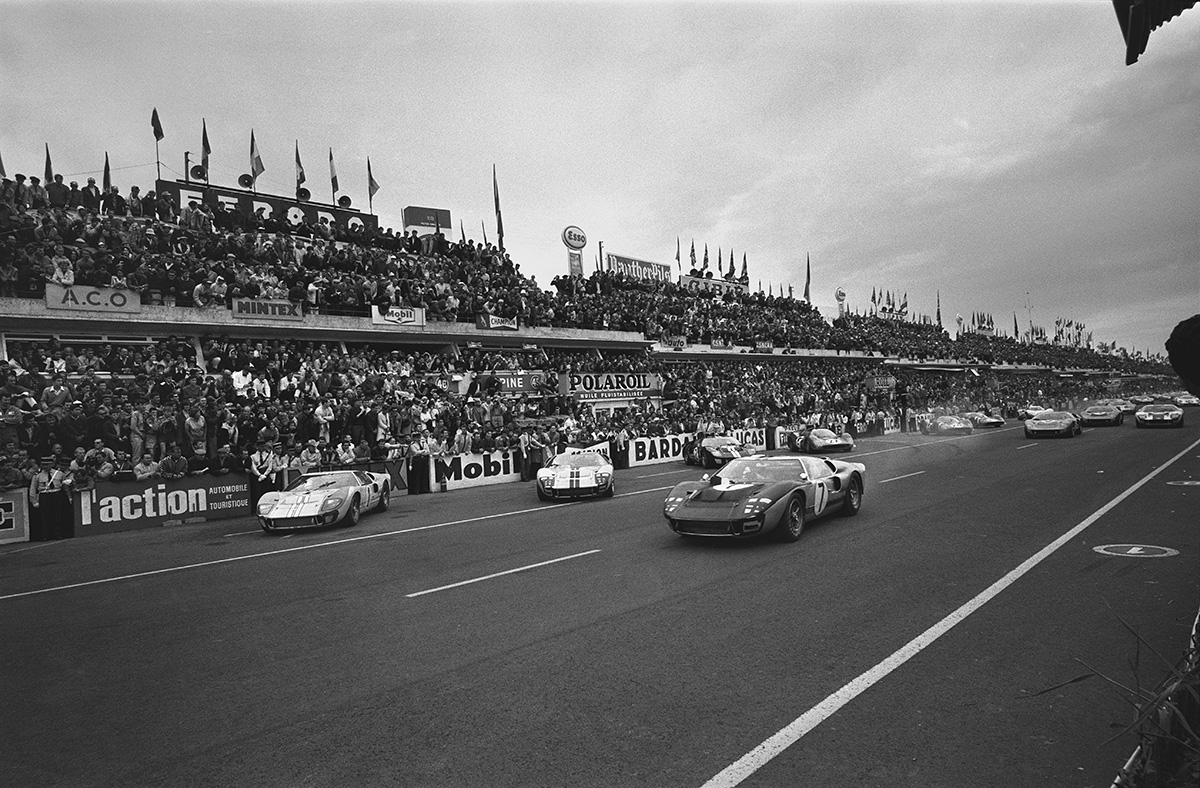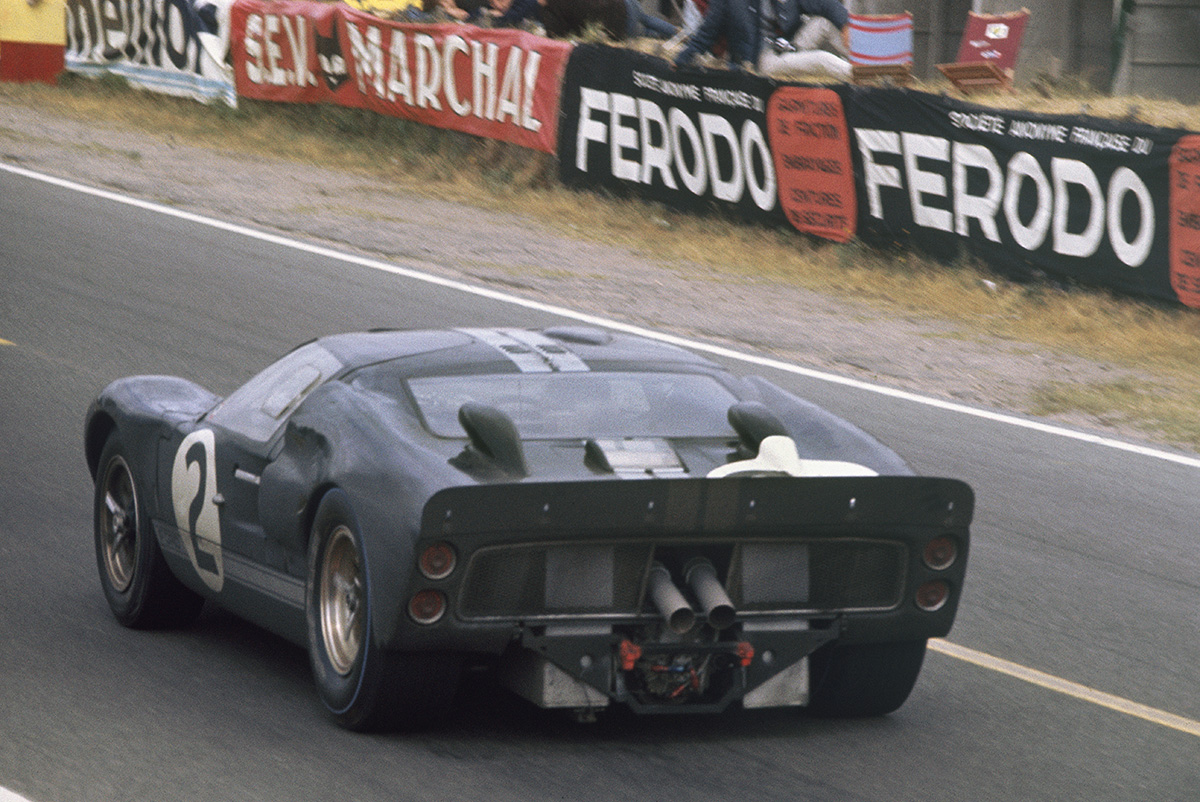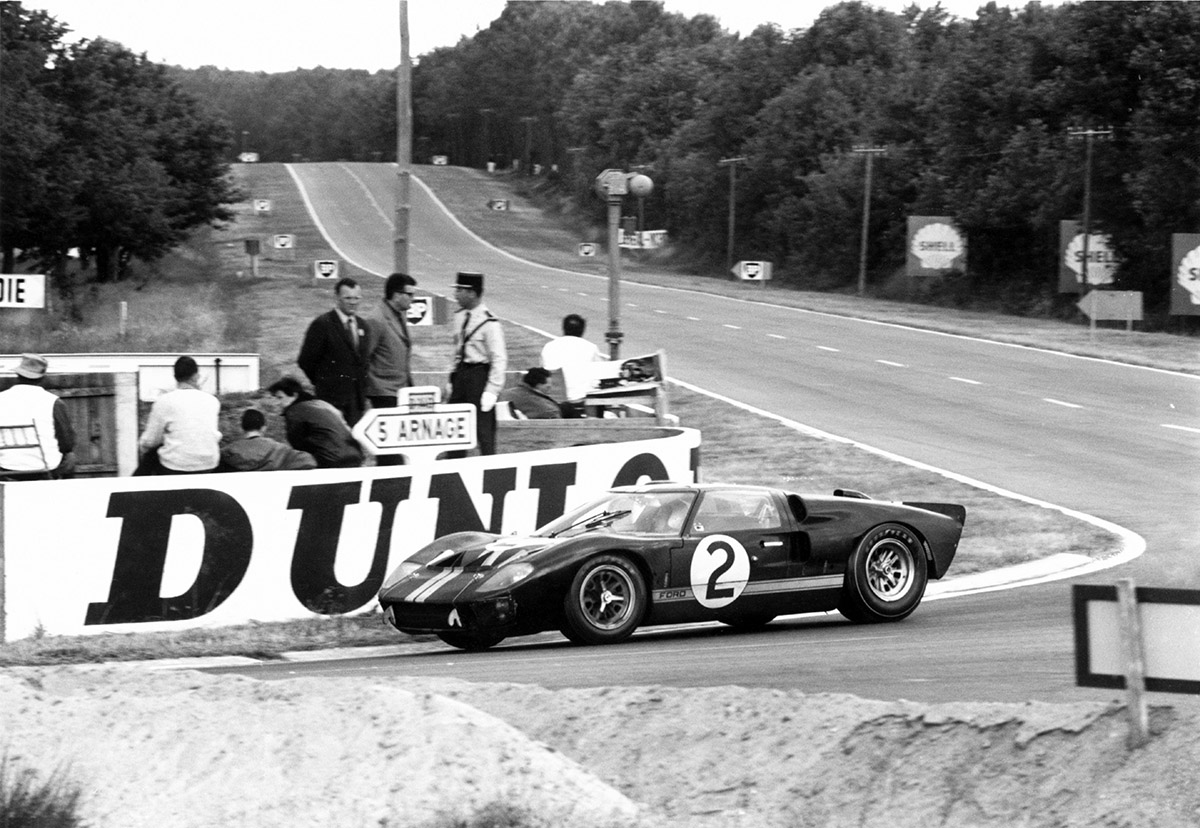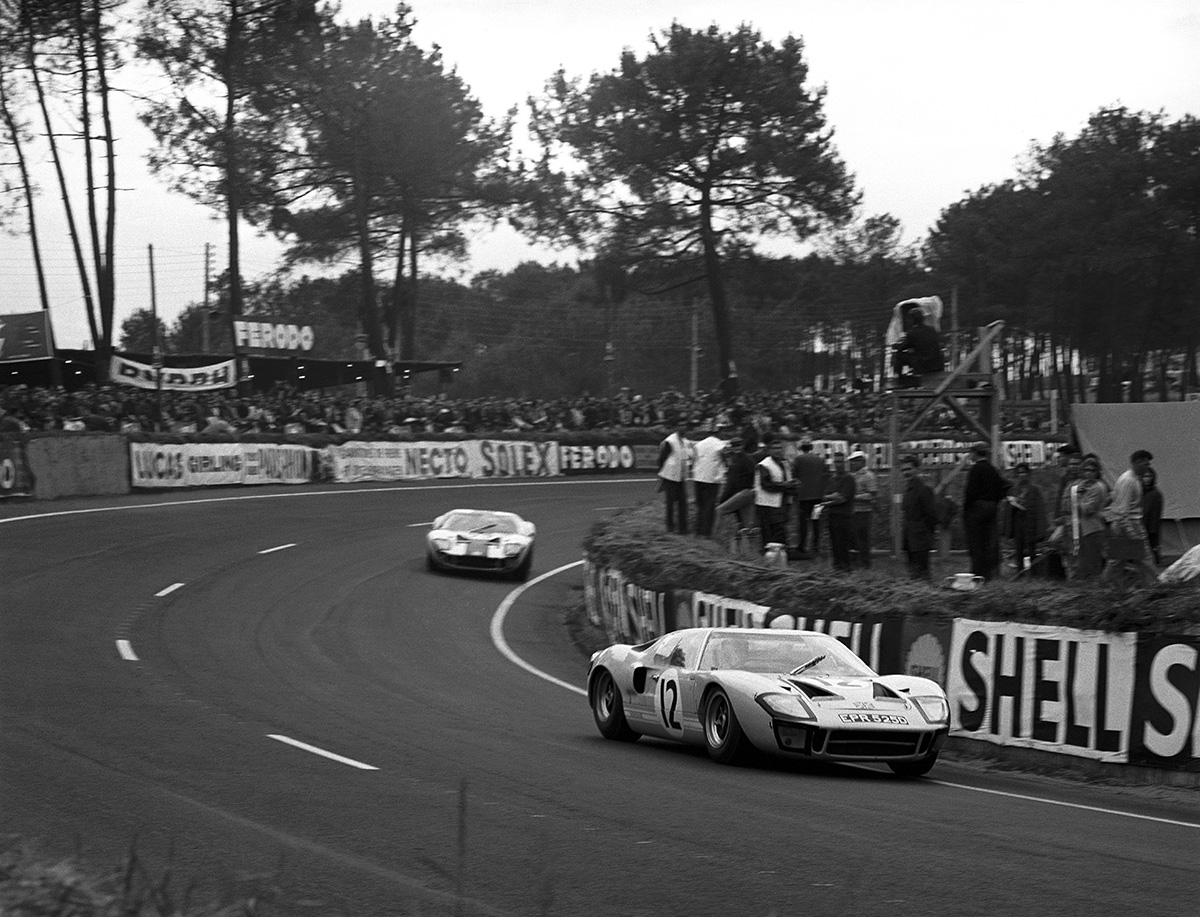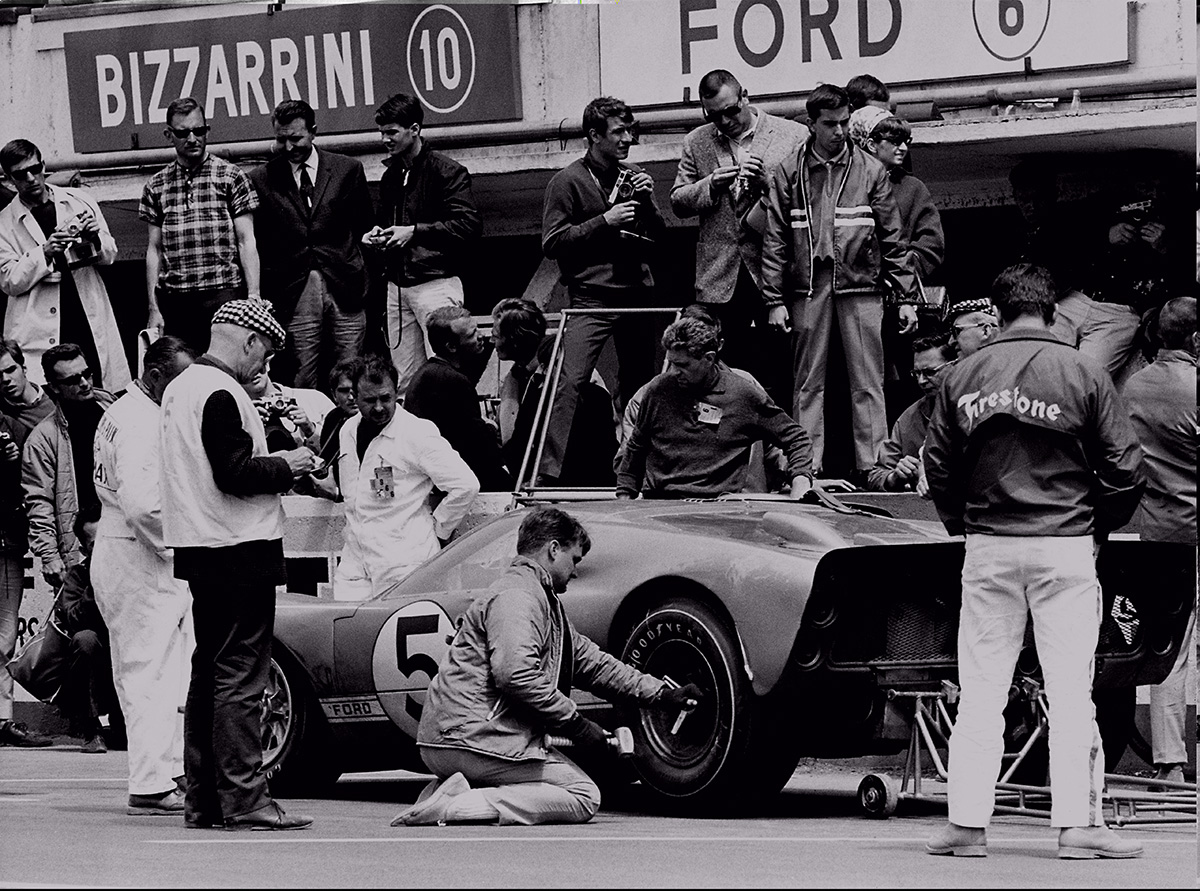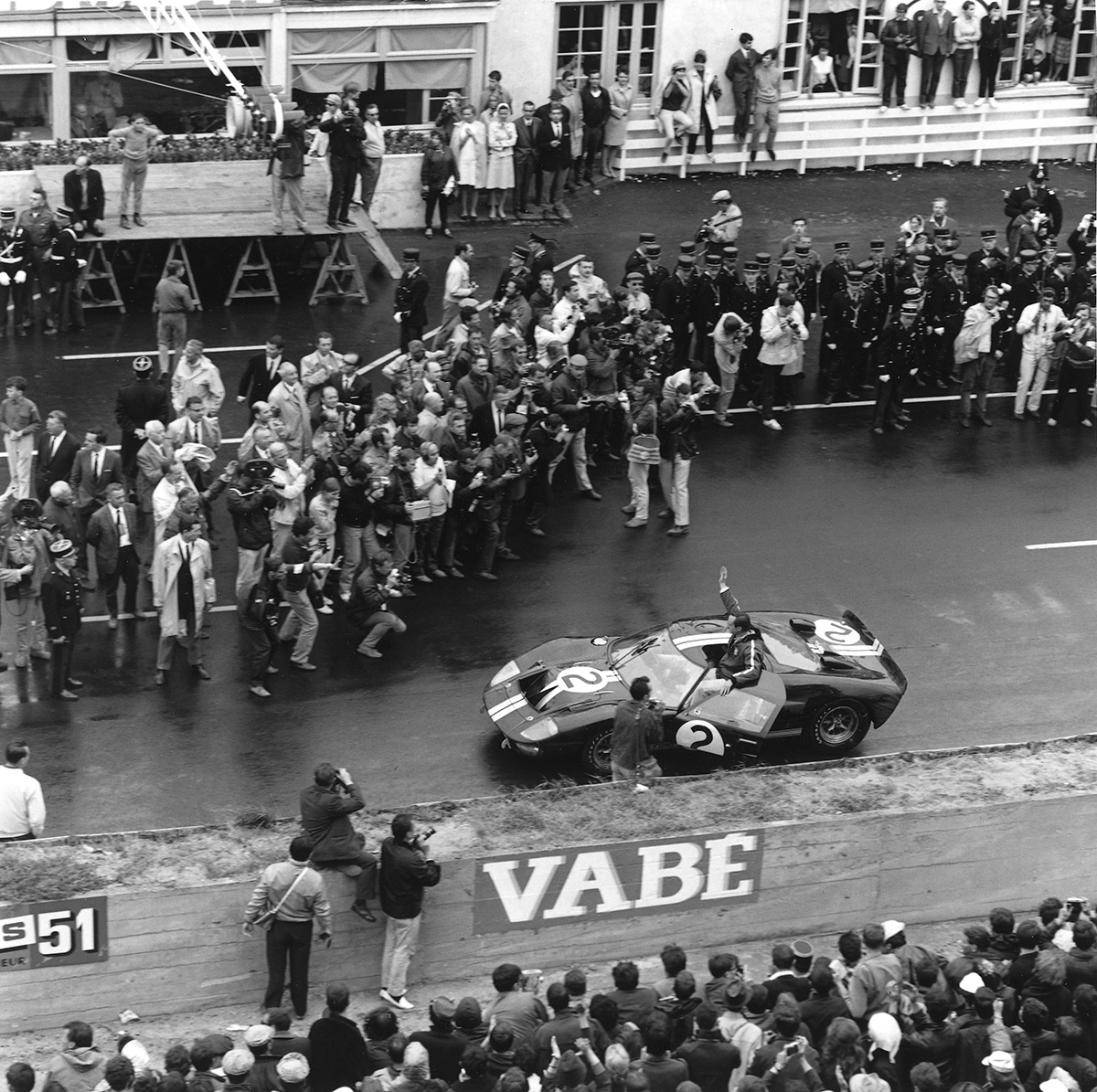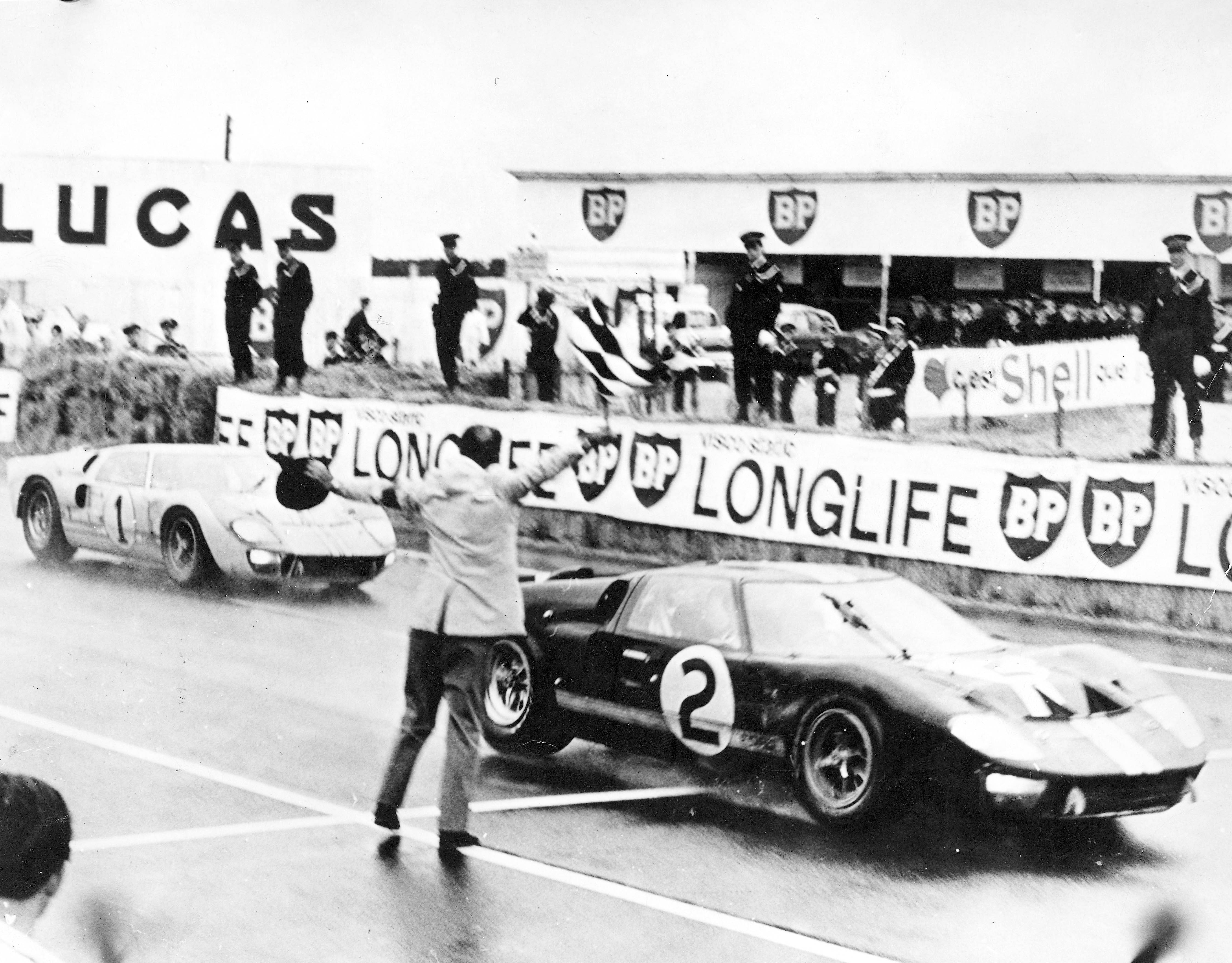With a Ford 1-2-3, the closest finish in Le Mans history and a first outright win for an American team, 1966 was a watershed year despite all the shenanigans. So, overlook the relative costs of the operations, the technical gulf between the cars, the Ford’s huge capacity advantage and the fact that an armada of GT40s was battling a handful of Ferraris and, 50 years on, relive the day that the American blue collar upstarts gave a bloody nose to the Italian aristocrats.
The first Ferrari across the line was the Maranello Concessionaires 275GTB/C of Piers Courage and Roy Pike, though it finished some 50 laps behind the McLaren/Amon GT40. Graham Hill and Brian Muir (pictured) didn’t have quite such a good day: their Mk2 GT40 retired after just 110 laps.
The Courage/Pike 275GTB/C is harried by the Ronnie Bunkum and Dick Hutcherson GT40 Mk2, which went on to finish the race in third position.
Though Ford locked out the top three finishing positions, a greater number of GT40s failed to make the distance. Sir John Whitmore’s Alan Mann Racing Mk2 was one such car, which retired after just 31 laps.
One of 12 Ford GT40s entered in the race is stripped down during testing.
Ford’s instruction to stage a publicity photo at the finish cost Ken Miles dear. Despite McLaren allowing Miles to cross the line first, the ACO judged that the Kiwi car had started from further back in the grid, and therefore travelling 8 metres more than the second car. Ken Miles was denied his triple crown as a result, after winning at Daytona and Sebring.
Though it ultimately retired, the Graham Hill/Brian Muir GT40 lead the race from the start.
Ford’s new Mk2 GT40 offered a number of improvements over the outgoing model that gave it a massive advantage at La Sarthe, most notably a monstrous 7-litre V8 in place of the old car’s 4.7-litre unit.
Both Chris Amon and Bruce McLaren had driven for Shelby American at Le Mans in 1965. In stark contrast to their success in ’66, both drivers’ cars retired, Amon’s at 89 laps and McLaren’s at 45.
Innes Ireland and Jochen Rindt campaigned one of Ford’s older Mk1 GT40s under the FR English banner. Their race had only just begun when they were forced to retire after eight laps. They weren’t the first out though: that dubious honour belong to Nino Vaccarella and Mario Casoni’s NART Dino 206S, which gave up the ghost a lap earlier.
Ford wasn’t the only team with faith in its latest Mk2 GT40: a number of other teams also entered the cars. The most successful outside of Shelby American was the Holman & Moody car, which came third driven by Ronnie Bucknum and Dick Hutcherson.
The pits come alive as the winning GT40 rumbles to a halt following 360 punishing laps of La Sarthe.
Bruce McLaren and Chris Amon’s 7-litre GT40 crosses the line first to head a Ford 1-2-3, thanks to Ken Miles dropping back into second place.
Greg MacLeman
Greg MacLeman is a contributor to and former Features Editor of Classic & Sports Car, and drives a restored and uprated 1974 Triumph 2500TC
